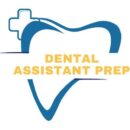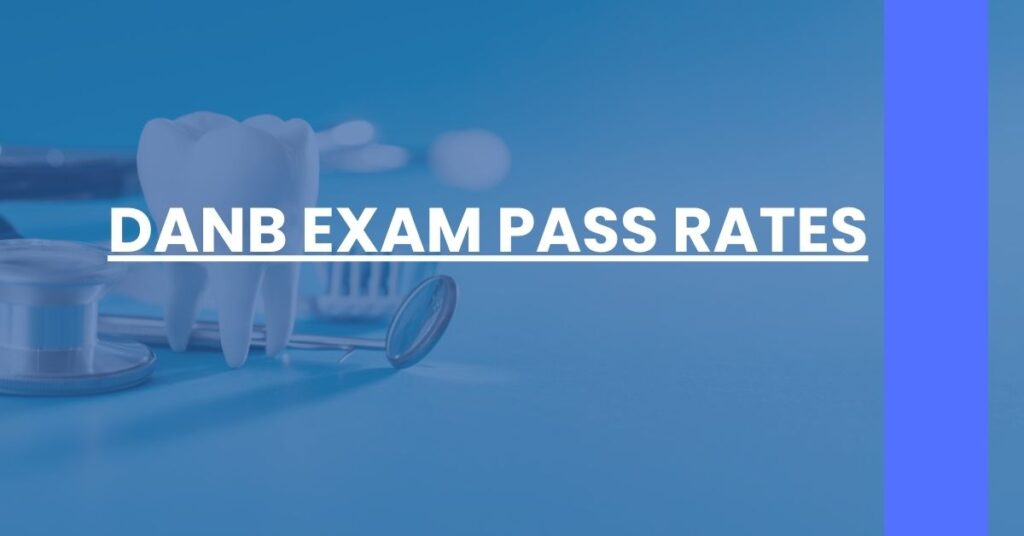Unlocking the secrets of DANB exam pass rates can set the stage for dental assistant success.
- DANB Exam Pass Rates Overview: Gain insight into what the numbers mean for dental assisting professionals.
- Historical Trends: See how pass rates have changed over time and what it indicates about the examination standards.
- Preparation Strategies: Discover effective study methods that correlate with higher DANB exam pass rates.
Understanding DANB exam pass rates is just the beginning of your journey to success.
Introduction to DANB Exams
The Dental Assisting National Board serves as the standard-bearer for excellence in the field of dental assisting. Their exams are nationally recognized and widely respected credentials that provide professional growth opportunities for dental assistants.
What Is the DANB?
DANB is an independent nonprofit organization that is recognized by the American Dental Association (ADA) as the national certification board for dental assistants. Certification through DANB is a mark of distinction and is often required by state dental boards for various levels of practice within the field.
The DANB Examinations
The DANB offers several exams, designed to assess and verify the knowledge and skills of dental assistants. Each exam typically consists of several components, which vary depending on state requirements and standards of practice.
- Certified Dental Assistant (CDA): This credential is often seen as a benchmark for professionalism in dental assisting and includes three component exams: General Chairside Assisting (GC), Radiation Health and Safety (RHS), and Infection Control (ICE).
The Importance of Being Certified
Becoming DANB certified affirms a dental assistant’s commitment to professional development and their competency to carry out critical tasks in a dental office. It can lead to higher wages, more employment opportunities, and recognition within the dental community.
Exam Pass Rates: An Overview
When it comes to professional certification exams like those offered by DANB, pass rates can serve as an indicator of both the rigor of the test and the preparedness of those who take it.
Understanding Pass Rates
For prospective test-takers, these rates can be a beacon, guiding their study efforts and managing expectations.
Impact of Publicizing Pass Rates: Publishing pass rates is not only about transparency but also serves as a benchmark for educational providers to aim for, and for students to assess their potential for success.
Interpreting Pass Rates: It’s important to consider pass rates within the context of the exam’s difficulty and the preparedness of examinees.
Historical Pass Rate Trends
Understanding the historical changes in the DANB exam pass rates can be essential for candidates as it may reflect the evolving complexity of the industry and the exam itself.
Trends Over the Years
Observing the historical pass rates reveals certain trends:
- Variability in pass rates indicates the fluctuating nature of exam difficulty or the changing demographics of candidates.
- Peaks in pass rates may align with improvements in study resources or increased emphasis on exam preparation.
A Closer Look at the Numbers: For instance, years with perfect scores suggest that there might have been stronger educational support or changes to how the content was tested which aligned better with the preparation material available to candidates.
Factors Affecting Pass Rates
The DANB exam pass rates are subject to numerous influencing factors, each playing a role in the success or failure of examinees.
External Influences
Several external influences can affect pass rates, such as:
- Changes in Curriculum: Shifting standards in dental assistant education can lead to variations in pass rates from year to year.
Study Materials and Exam Preparation
The resources candidates use to prepare for the DANB exams can significantly influence pass rates:
- Access to comprehensive study materials, like those found on Mometrix Academy, is crucial.
- Exam Preparation: The amount of time and effort dedicated to study is directly proportional to a candidate’s ability to pass. High-quality, focused preparation is key.
Candidate Demographics
The background of test-takers, including education levels, aptitude, and previous experience, can all impact pass rates.
- Educational Background: Candidates with more formal education or those who graduated from accredited programs may have an advantage.
By examining the factors that affect pass rates, prospective test-takers can better plan their study strategies to optimize their chances of success.
Breaking Down the Pass Rates by Exam
The DANB administers various components within their exams, and each of these components yields different pass rates. Exam candidates should be attentive to how these rates differ as it offers insights into which aspects of the exams could be more challenging and thus may require more focused preparation.
Certified Dental Assistant (CDA) Components
Understanding the pass rates of the individual components of the CDA exam can help students prioritize their study efforts effectively.
- General Chairside Assisting (GC): This portion tests the candidate’s knowledge of chairside procedures and patient care.
- Radiation Health and Safety (RHS): The RHS component is critical as it deals with x-ray procedures and radiation safety, areas that require stringent attention to detail and understanding.
Studying for each part requires a strategic approach, for instance, utilizing resources provided by the Manor College EFDA program, which boasts a higher than average pass rate for the Radiation Health and Safety Exam.
The Radiation Health and Safety (RHS) Exam
- National Average Pass Rate: The RHS exam has a reported national average pass rate of 61%, which is particularly worth noting because it underscores that nearly four out of ten candidates do not pass on their first attempt.
By focusing on preparation resources and understanding the rigorous nature of the RHS exam, candidates may improve their chances of surpassing the national average.
Infection Control (ICE) and General Chairside (GC) Exams
- Considerations for Pass Rates: While specific pass rates for the ICE and GC components are not as frequently publicized as the RHS exam, they are no less important.
- Study Resources: Research and invest in quality study guides and practice exams.
Each portion of the CDA has its intricacies; recognizing these differences is crucial in crafting a disciplined and effective study schedule.
Top Resources to Prepare for the DANB Exams
Gearing up for the DANB exam requires careful planning and the right resources. Here are some top tools to prepare you for success on exam day.
Study Guides and Online Courses
- Leveraging Official Materials: The first step should always be to review the candidate guides and textbooks recommended by the DANB itself.
Utilizing these resources can help reinforce study material and improve test-taking skills, which can translate to better performance on exam day.
Online Practice and Review
- Mometrix Academy: Providing a wealth of study materials, including practice tests that simulate the exam experience, Mometrix Academy is a great place to start for those looking to bolster their test preparation.
Professional Courses
- Accredited Programs: Consider enrolling in an accredited dental assisting program, which often includes coursework and exam preparation structured to give students the best chance of passing the DANB exams.
The right preparation tools are instrumental in achieving a passing score. Be sure to take advantage of the materials that align best with your learning style and study needs.
The Importance of Accredited Dental Assisting Programs
Attending an accredited dental assisting program can have a significant impact on your success with the DANB exams and your future career.
Accreditation and Educational Quality
- Accredited vs. Non-Accredited: Accreditation serves as a quality assurance measure, ensuring that the educational program meets national standards. Students from accredited programs often have access to more comprehensive curriculum, better resources, and experienced faculty.
The correlation between graduate performance on certification examinations and program accreditation is highlighted at NHTI’s Dental Assisting Program page, suggesting that accreditation may provide an advantage to candidates.
Program Benefits
- Clinical Experience: Accredited programs typically provide hands-on experience, which is invaluable when it comes to understanding real-world scenarios and applying theoretical knowledge.
- Networking Opportunities: Through these programs, students often have access to a network of professionals and alumni, which can be beneficial for job placement post-certification.
Strategies to Enhance Pass Odds
Preparing for the DANB exam isn’t just about hitting the books; it’s about smart strategies that hone your test-taking prowess.
Targeted Study Sessions
- Focused Practice: Identify your weak spots and tailor your study sessions to address these areas.
- Regular Review: Periodic review of material, even areas where you feel strong, can help consolidate knowledge.
Create* a structured study plan and stick to it diligently—the more personalized your approach, the better.
Test-Taking Techniques
- Time Management: Learn to manage your time effectively during the exam.
Adopting these strategies can significantly boost your confidence and your performance when you take the DANB exams.
Conclusion: How to Use Pass Rates to Your Advantage
Understanding and utilizing DANB exam pass rates is a strategic approach to conquering the certification process.
Don’t just consider the numbers;** use them** to your advantage. Equip yourself with the best resources, take advantage of accredited educational programs, and embrace effective study and test-taking strategies.

